If you like adding unique plants to your garden, chances are that Crepe Myrtle is on your list too. However, despite its popularity, the plant isn’t the easiest to grow, especially when it involves growing conditions like temperature, weather, water, soil, etc.
A gardener has to be closely vigilant about the conditions and ensure that everything is just how it should be. This tropical ornamental beauty has a very specific temperature requirement. Since they are a little problematic to grow, you’d have to keep an eye on their growth and the damage too.
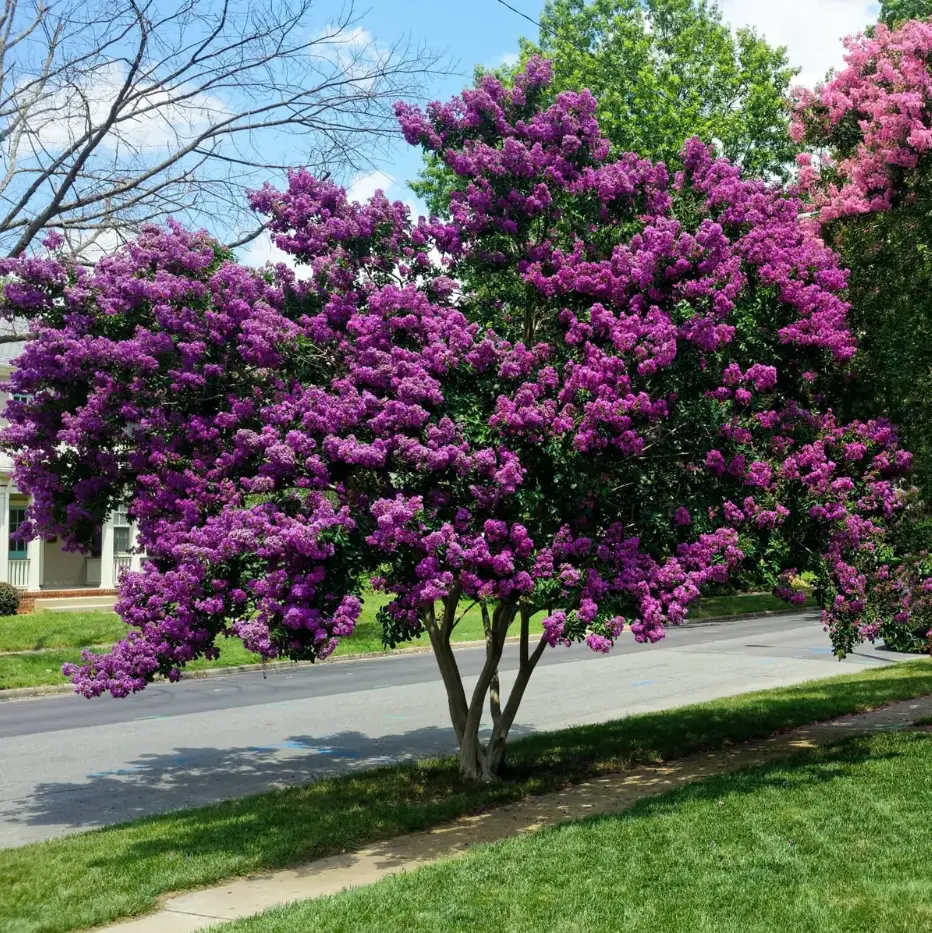
Crepe myrtle is quite a resilient plant but certain factors result in the leaves curling or other complications with the leaves. We will discuss that in detail in this guide along with some quick fixes.
Why is the Crepe Myrtle Leaves Curling?
The causes behind the Crepe Myrtle leaves curling are quite extensive. It isn’t just the temperature that you have to look out for. Instead, certain other factors actively contribute to the issues as well.
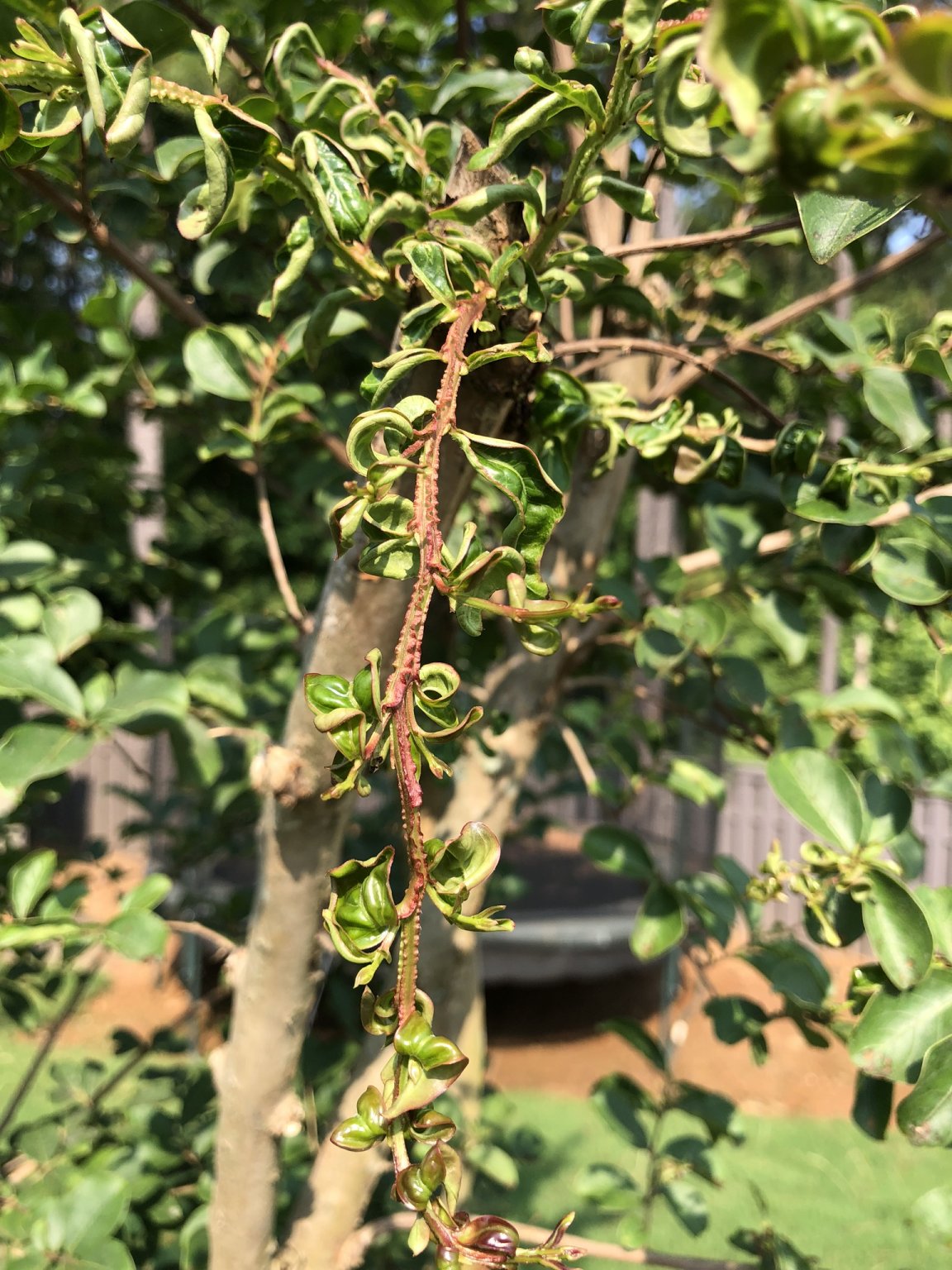
Following are some of the causes you might want to look out for:
1. Pest Infestation
As we said, Crepe Myrtle is quite a resilient plant but the leaf curling is often a direct consequence of a pest infestation. Some of the common pests that could trigger the damage are mites, thrips, whiteflies, etc. If you notice the leaves consistently curling, we’d recommend taking a closer look at the plant. Sometimes, the issue is often misplaced. So, be very careful when checking the plant. Look under the leaves because most of the pests reside there and leave black deposits on the underside.
How to fix it?
Crepe myrtle has very thick and bushy foliage. So, separating each leaf and looking for the infestation can be a tough job. In that case, we’d recommend taking a water hoe and drenching the entire plant with some water. This will remove all the webs and deposits from the pests.
Once that’s done, spray neem oil or canola oil all over the plant. This will create a protective layer on the plant and prevent the pests from infesting.
2. Virus Infestation
Crepe myrtle diseases are a common consequence of growing this priced plant in your garden. The issue stems from a viral attack on the plant, which progresses very quickly if you don’t take quick measures. The viral attack generally comes with mites, insects, and nematodes that feast on the leaves. If they leave behind a viral colony, it will multiply quickly and infect the entirety of the plant, leading to the curling of the leaves.
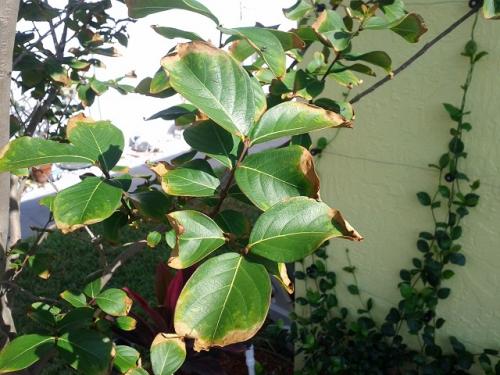
How to fix it?
Your first step towards removing the issue is by finding the vectors. It could be an insect or even a type of pest that’s carrying the virus. So, treating the plant with insecticide and pesticides is crucial at this point. Trap cropping also works in reducing the impacts of insects on the plant.
3. Nitrogen Imbalance in the Soil
Like every other plant, even Crepe Myrtle has specific nutrient specifications for its growth. If the balance isn’t met, chances are that the same will contribute to the curling leaves and further damage to the plant. Lack of nitrogen in the soil will also stunt the growth of the plant, which is problematic as well. Spot for signs of unhealthy leaves. This is a common sign of nitrogen deficiency in the crepe myrtle plant.
How to fix it?
Start by checking the nitrogen level in the soil. You can do so with the various soil testing kits that are available on the market. If you find that the nitrogen levels are low, we’d recommend that you get a nitrogen-rich fertilizer with balanced levels of phosphorus and potassium as well. Adding this to the soil will restore the nitrogen levels and prevent further damage to the plant you are growing.
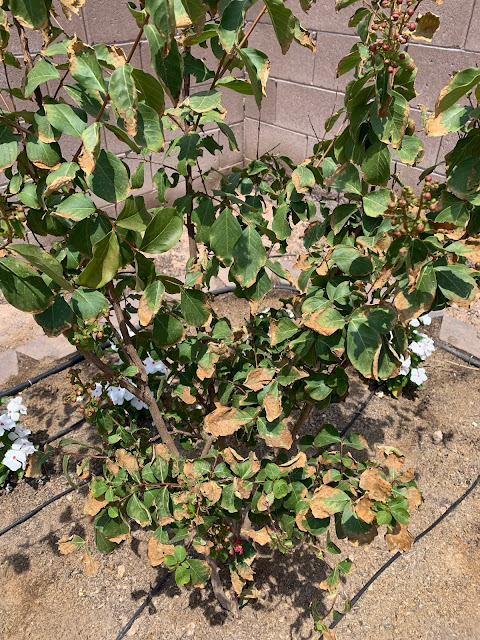
4. External Stress Factors
Environment and manual stress factors can also make the leaves curl in the Crepe Myrtle plant. This includes factors like lack of optimal water, excess light exposure, or heat damage from the sunlight. You have to be mindful of these growth factors since they play a very crucial role when it comes to the overall growth, appearance, and quality of the plant that you are growing. During the summer, ensure that you create favorable growing conditions so that the plant doesn’t go into heat shock.
How to fix it?
Once you identify the stress conditions, you need to mitigate the issues immediately. If it is related to a lack of watering, replenish the moisture levels. If it is due to excess sunlight, provide the required shade to the plant so it doesn’t go into heat shock or experience burning of the leaves. Also, prune a few of the branches that have outgrown. This improves air circulation.
5. Potent Chemical Damage
The last factor that generally contributes to damage to the Crepe Myrtle leaves is chemical damage. This includes the herbicides that you are spraying in excess on the plant. While they prevent the overgrowth of weeds, they might end up doing worse for the plant. Excess of 2,4-D herbicides are considered unsafe for decorative plants like Crepe Myrtle and will leave to leaf curling. So, limit the usage of these products.
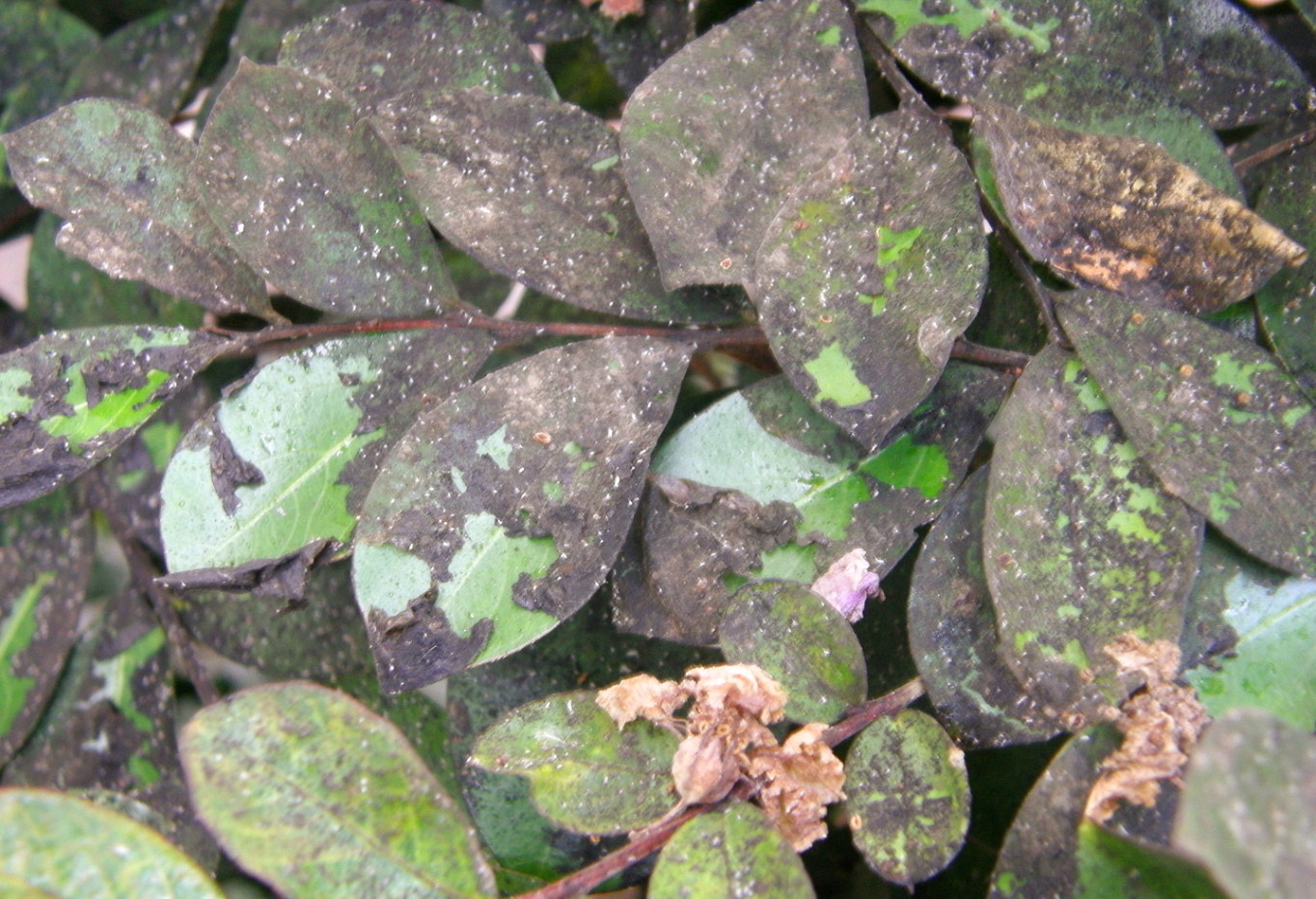
How to fix it?
When you are using herbicide, ensure that you aren’t using it frequently and in excess. Instead, maintain a balance of using natural and organic matter as a growth booster instead of relying on just the herbicide. Also, mow the area of the garden frequently to get rid of excess weed growth from the close vicinity. Doing these should help reverse the damage in a few weeks.
FAQs
1. Why are the leaves on my crepe myrtle curling?
If you are suddenly noticing curling in the leaves of your crepe myrtle plant, it is most likely due to the powdery mildew growth on the leaves. They spread quite rapidly, meaning that you’d have to be quick in the actions you take before it takes a turn for the worse.
2. Can leaf curl be reversed?
In some cases, the incidence of leaf curling in crepe myrtle plants is due to a viral infection. If that is the case and you can identify it quickly, reversing the issue shouldn’t take you any longer. What we’d recommend you do is spray the entire plant with the necessary medication to prevent the further spread of the infection.
3. Should I remove leaves with leaf curl?
If you notice leaf curling in the crepe myrtle plant, it is better to find those infected leaves and remove them from the plant immediately. Doing so ensures that the infection won’t spread unnecessarily and you won’t have to face any issues with the plant in the future. If the infection is due to mildew or spores, cutting the curled leaves gets rid of those too.
4. What deficiency causes the curling of leaves?
Sometimes, calcium deficiency in the crepe myrtle plants might lead to complications of leaf curling. If that is the case, you might have to compensate for the issue by spraying some calcium-rich fertilizer in the soil to see if that makes any difference to the plants.
5. Does overwatering cause leaf curl?
Overwatering can be a potential reason behind leaf curling in the crepe myrtle leaves. If you notice that happening, we’d recommend you check the soil’s moisture levels before taking any further action for the same. Ideally, you don’t want to overdo anything.
Conclusion
If you are noticing leaf curling in the Crepe Myrtle plant, these are some of the possible reasons why. We hope this guide gives you a comprehensive guide about the issue and how you can fix the issues as well. Test for all the causes and take the necessary control measures as needed.

![5 Reasons for Crepe Myrtle Leaves Curling [How to Fix]](https://www.plantsofmerit.org/wp-content/uploads/2022/07/5-Reasons-for-Crepe-Myrtle-Leaves-Curling-How-to-Fix.jpg)